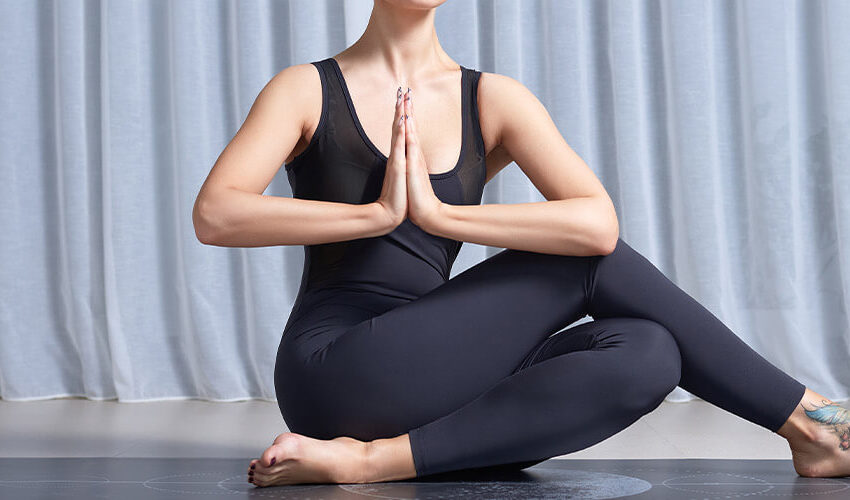Diabetes is a chronic health condition that affects millions of people worldwide. It requires careful management to prevent complications and maintain a healthy lifestyle. While medical treatments and lifestyle changes play a crucial role, the integration of yoga into diabetes management has shown promising results. In this informative guide, we will delve into the technical aspects of using yoga for diabetes and its potential benefits.
Understanding Diabetes and Its Impact on Health
Diabetes is a metabolic disorder characterized by high blood glucose levels due to the body’s inability to produce enough insulin or effectively use it. There are two main types of diabetes:
- Type 1 Diabetes: This is an autoimmune condition in which the body’s immune system attacks and destroys insulin-producing cells in the pancreas, leading to insulin deficiency.
- Type 2 Diabetes: This form of diabetes occurs when the body becomes resistant to insulin or fails to produce enough insulin to meet its needs.
The Importance of Diabetes Management
Managing diabetes is crucial to prevent complications such as cardiovascular disease, nerve damage, kidney problems, and vision loss. Proper management involves monitoring blood sugar levels, adhering to a balanced diet, engaging in regular physical activity, and taking prescribed medications.
The Role of Yoga in Diabetes Management
Yoga is a holistic practice that integrates physical postures, breathwork, meditation, and mindfulness. When incorporated into diabetes management, yoga can complement traditional treatments and contribute to improved well-being.
The Technical Benefits of Yoga for Diabetes
Yoga offers several technical benefits that can aid in diabetes management and promote overall health. Let’s explore how specific aspects of yoga can positively impact individuals with diabetes.
Physical Benefits
- Improved Insulin Sensitivity: Certain yoga poses, such as twists and stretches, stimulate abdominal organs, including the pancreas, potentially enhancing insulin sensitivity.
- Enhanced Circulation: Yoga practices that involve gentle inversions and forward bends can improve blood flow to vital organs, promoting overall circulatory health.
- Weight Management: Regular yoga practice can help with weight management, a crucial aspect of diabetes management, especially for individuals with type 2 diabetes.
- Stress Reduction: Yoga’s calming effects can lower stress hormone levels, leading to reduced blood sugar spikes and better glucose control.
Breathwork and Mindfulness
- Stress Reduction: Yoga incorporates deep breathing techniques that activate the parasympathetic nervous system, reducing stress and promoting relaxation.
- Mindful Eating: Yoga encourages mindfulness, leading to a greater awareness of eating habits and food choices, supporting better dietary decisions.
- Emotional Balance: Practicing mindfulness through yoga can help manage emotional fluctuations, which can be beneficial for those dealing with diabetes-related stress.
Improving Sleep Quality
Yoga’s relaxation techniques can promote better sleep quality, which is essential for overall health and diabetes management.

Best Yoga Poses for Diabetes Management
Certain yoga poses are particularly beneficial for individuals with diabetes. However, it’s essential to consult a healthcare professional or a certified yoga instructor before starting any new exercise routine, especially if you have diabetes or other health conditions. Here are some yoga poses that may help manage diabetes:
Paschimottanasana (Seated Forward Bend)
Paschimottanasana is a seated forward bend that gently stretches the back of the body, including the hamstrings and lower back. This pose helps improve circulation in the abdomen and can be beneficial for individuals with diabetes.
Setu Bandhasana (Bridge Pose)
Setu Bandhasana is a backbend that opens the chest and stretches the spine. It can aid in stimulating the thyroid gland and pancreas, potentially enhancing hormonal balance.
Ardha Matsyendrasana (Half Lord of the Fishes Pose)
Ardha Matsyendrasana is a seated twist that stimulates the abdominal organs, including the pancreas. Twisting poses can be helpful in improving digestion and insulin sensitivity.
Balasana (Child’s Pose)
Balasana is a restful pose that promotes relaxation and stress relief. Practicing Balasana regularly can help manage stress, which is crucial for individuals with diabetes.

Precautions and Tips for Practicing Yoga with Diabetes
While yoga can be beneficial for diabetes management, it’s essential to take certain precautions and follow these technical tips:
- Consult Your Healthcare Provider: Before starting a yoga practice, consult your healthcare provider to ensure that it is safe for your specific condition.
- Practice Mindfully: Listen to your body and practice within your limits. Avoid straining or pushing yourself into challenging poses.
- Monitor Blood Sugar Levels: Regularly monitor your blood sugar levels, especially before and after yoga sessions, to understand how it affects your body.
- Stay Hydrated: Drink plenty of water before, during, and after your yoga practice to stay hydrated.
- Avoid Inversions: If you have uncontrolled blood pressure or eye complications, avoid or modify inversions in your yoga practice.
Yoga and Diabetes: A Transformative Journey to Wellness
Integrating yoga into your diabetes management plan can be a transformative journey towards better health and well-being. However, remember that yoga is not a replacement for medical treatment but a complementary practice that enhances your overall quality of life.
By incorporating yoga into your daily routine, you can experience the technical benefits of improved insulin sensitivity, stress reduction, better sleep and enhanced mindfulness. Embrace the empowering potential of yoga for diabetes and embark on a path to holistic wellness.

